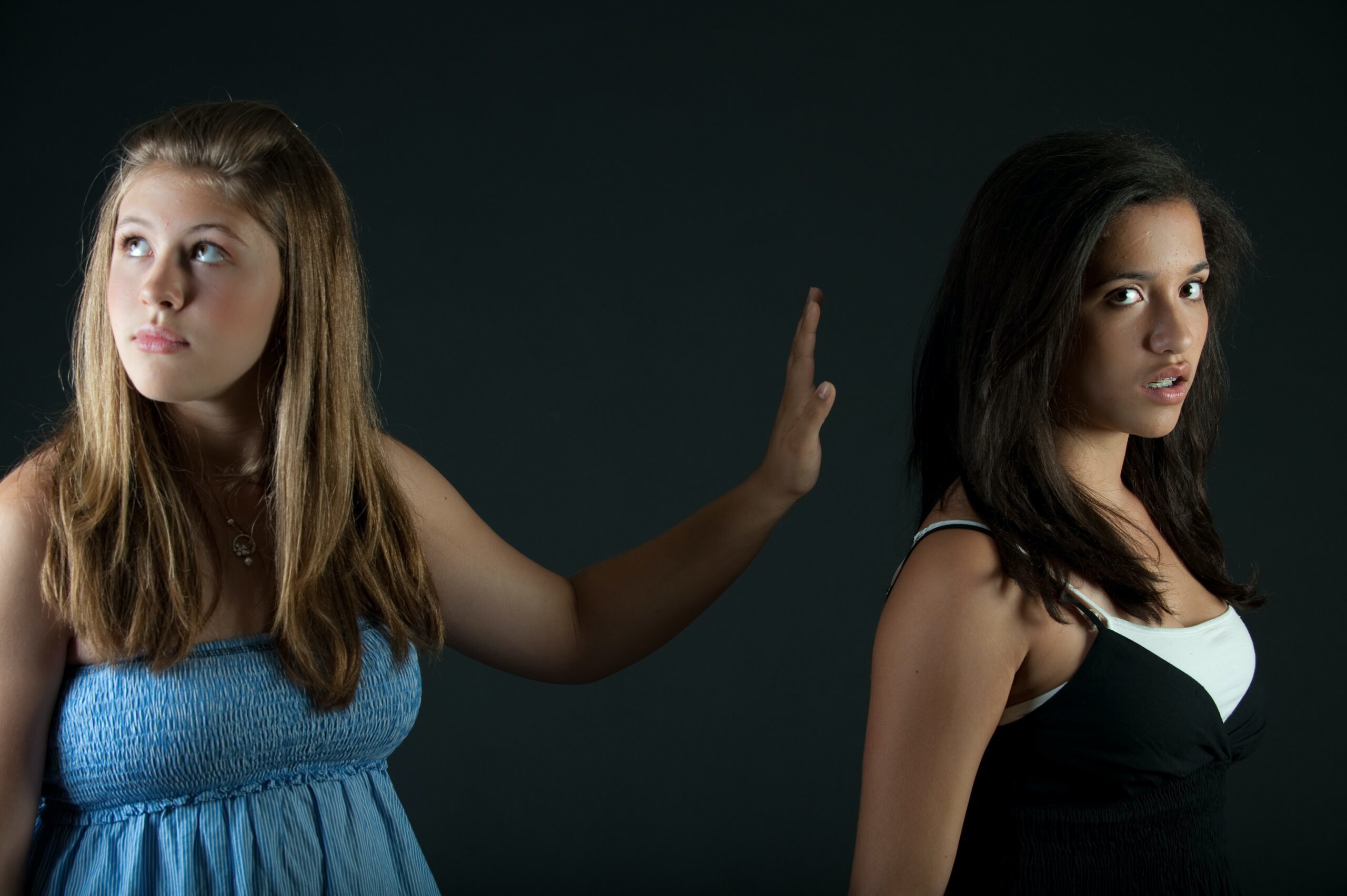B.I.O.N.I.C. Teams Stopping Bullying and Making Schools Safer

In the early years of the B.I.O.N.I.C. Team, to prevent kids from falling through the cracks, students reached out to peers who were new, sick, hospitalized, or lost loved ones. In order to truly create a caring climate in a school though, B.I.O.N.I.C. Founder Sandy Austin knew they needed to address bullying.
In the conferences and trainings that she went to for school counselors, Sandy noticed that those programs cost about $2,000-$5,000 or they required a whole semester of training peer mediators/counselors to run the program. Most schools didn’t have the money nor the staff and time to spend a semester training students to run the programs.
So Ms. Austin took time to research to try to find the right program that could fit into the B.I.O.N.I.C. Team programming strategies. Knowing that a program couldn’t be too complicated, but easy to remember at a moment’s notice when a student sees bullying, she wanted to make B.I.O.N.I.C.’s program easy to implement as a stand-alone bystander program or as an add on to any programs schools already had invested in.
Sandy looked and looked for a program that could be adapted at all grade levels – elementary through high school. After finding none that complemented what B.I.O.N.I.C. Teams were already doing, and not duplicating efforts or leaving out crucial aspects of bully prevention, Sandy created “Prevent Bullying by Just Saying H.I.”
In “Prevent Bullying by Just Saying H.I.,” H stands for getting “Help” from an adult, and the I stands for bystanders to “Initiate” contact with the bullied student sometime that day to let them know it was wrong and they didn’t deserve it. The first step is to get “Help” from an adult when kids see or hear about bullying.
Only about 5% of students feel comfortable stepping in and stopping a bullying situation. So we encourage students, to – immediately when they see someone being bullied – find an adult to help stop the bullying. If they saw bullying online, then we encourage them to tell a school staff member as soon as possible. The adults know what to do to deal with the bully and help the bullied student.
When children are growing up, parents teach them about tattling. So, often, kids initially hesitate to tell on someone when they see an incident. So it is important to help students learn the difference between friendly banter and bullying. Bullying is something that is disrespectful, unwanted, and repeated. It can be a one-time incident, but more often than not it is an escalation of all three points.
Let’s say an incident happened in a hall during a passing period, and someone walking down the hall saw what happened. We would encourage that student to report it to an adult. Then later in the day, we encourage the bystander to “Initiate” contact with the bullied student to let him/her know it was wrong and they didn’t deserve it. If they both walk down that hall at the same time every day, we encourage the bystander to offer to walk down that hall with that student each day. That would help the bullied student feel safe and the bully to know that someone “has the bullied student’s back.” If that student eats lunch alone, the bystander can also invite the student to eat with their group.
We encourage schools to roll out the “Prevent Bullying by Just Saying H.I.” program at the beginning of a semester to get the maximum impact in the school. The program consists of a 10-minute classroom presentation in person or by video, in which students speak with PowerPoint slides and a 2-minute video of students depicting the program. Even though we provide the video, we encourage schools, if they have the capabilities, to re-create the video with their students. Then it will seem more relevant to the student body.
For the presentation, we have created two videos for each level – elementary, middle school, and high school. One video is for a 2-minute announcement to show the students, and the other video is for a 4-minute staff video to be shown in a staff meeting when B.I.O.N.I.C. leaders can explain the program. Then the staff will understand their responsibilities if a student comes to them about a bullying incident. The videos can be found on the bottom of this page on our site.
For the 2-minute video and the presentations, it is good to recruit a good mixture of a diverse group of students from every social group in the school – athletes, theater kids, artists, math/science lovers, fringe kids, etc. It is important that every student in the school sees someone in the presentation who looks like them by race/ethnicity, interests, etc. so they can know that they are “seen.”
We have found that after these presentations at the beginning of a semester, if every single bullying incident is reported during the month after the presentations, bullying decreases dramatically because the bullies realize they can’t get away with bullying at this school. The culture of the school transforms to one of everyone looking out for each other.
In our next post, we will talk more about the impact of the B.I.O.N.I.C. “Prevent Bullying by Just Saying H.I.” program in schools.